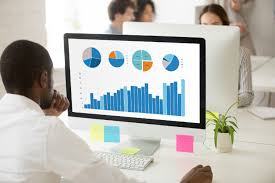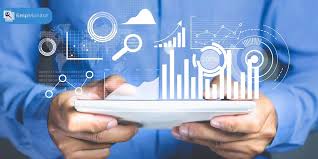In the contemporary world, real – time monitoring has emerged as a game – changer across various industries. Real – time monitoring refers to the continuous and immediate collection, analysis, and presentation of data, enabling timely decision – making and proactive responses. This technology has transformed the way businesses operate, healthcare is delivered, and public safety is ensured. 🌟

The ability to access up – to – the – minute information has become crucial in an era where speed and accuracy are of the essence. Whether it’s tracking the performance of a manufacturing process, monitoring a patient’s vital signs, or keeping an eye on environmental conditions, real – time monitoring offers unparalleled advantages.
2. Real – Time Monitoring in Healthcare
2.1 Patient Vital Sign Monitoring
Real – time monitoring of patient vital signs, such as heart rate, blood pressure, and oxygen saturation, is revolutionizing healthcare. With the help of wearable devices and advanced sensors, healthcare providers can continuously track a patient’s health status.
| Monitoring Parameter | Importance | Real – Time Monitoring Tools |
|---|---|---|
| Heart Rate | Indicates the heart’s functionality and can detect irregularities. | Wearable fitness trackers, smartwatches, and hospital – grade cardiac monitors. |
| Blood Pressure | Helps in diagnosing hypertension and other cardiovascular diseases. | Automated blood pressure cuffs, continuous non – invasive blood pressure monitors. |
| Oxygen Saturation | Measures the amount of oxygen in the blood, crucial for patients with respiratory conditions. | Pulse oximeters, both handheld and wearable versions. |
This real – time data allows for early detection of health issues, enabling prompt intervention and potentially saving lives. For example, in an intensive care unit, real – time monitoring of a patient’s vital signs can alert medical staff immediately if there is a sudden change, such as a drop in blood pressure or an irregular heart rhythm.
2.2 Medication Adherence Monitoring

Real – time monitoring can also be used to track patients’ medication adherence. Smart pill bottles and wearable devices can send alerts to patients when it’s time to take their medication. They can also record whether the medication was taken as prescribed.
This is particularly important for patients with chronic conditions, such as diabetes or hypertension, who need to take their medication regularly. Real – time monitoring can improve patient compliance, leading to better treatment outcomes.
3. Real – Time Monitoring in Industrial Manufacturing
3.1 Equipment Performance Monitoring
In industrial manufacturing, real – time monitoring of equipment performance is essential for maintaining productivity and preventing breakdowns. Sensors can be installed on machinery to collect data on factors such as temperature, vibration, and energy consumption.
| Equipment Parameter | Significance | Monitoring Sensors |
|---|---|---|
| Temperature | Abnormal temperatures can indicate overheating, which may lead to equipment failure. | Thermocouples, infrared sensors. |
| Vibration | Excessive vibration can be a sign of mechanical problems, such as misalignment or wear. | Accelerometers. |
| Energy Consumption | Monitoring energy usage helps in identifying inefficiencies and reducing costs. | Power meters. |
By analyzing this real – time data, manufacturers can detect potential issues early and schedule maintenance before a breakdown occurs. This reduces downtime and saves on repair costs.
3.2 Quality Control Monitoring
Real – time monitoring is also used for quality control in manufacturing. Vision systems and sensors can inspect products as they are being produced, checking for defects such as scratches, cracks, or incorrect dimensions.
This ensures that only high – quality products reach the market, improving customer satisfaction and reducing the risk of product recalls. For example, in the automotive industry, real – time monitoring of the assembly line can detect faulty components and prevent them from being installed in vehicles.
4. Real – Time Monitoring in Environmental Science
4.1 Air Quality Monitoring
Real – time monitoring of air quality is crucial for protecting public health and the environment. Air quality monitoring stations are equipped with sensors that can measure pollutants such as particulate matter (PM), sulfur dioxide (SO₂), and nitrogen oxides (NOₓ).
| Pollutant | Health Effects | Monitoring Sensors |
|---|---|---|
| Particulate Matter (PM) | Can cause respiratory and cardiovascular problems. | Laser particle counters, beta – attenuation monitors. |
| Sulfur Dioxide (SO₂) | Irritates the respiratory system and can contribute to acid rain. | Electrochemical sensors. |
| Nitrogen Oxides (NOₓ) | Can cause respiratory problems and contribute to the formation of smog. | Chemiluminescence sensors. |
This real – time data is used by environmental agencies to issue air quality alerts, implement pollution control measures, and conduct research on the sources and effects of air pollution.
4.2 Water Quality Monitoring
Real – time monitoring of water quality is essential for ensuring the safety of drinking water and protecting aquatic ecosystems. Sensors can measure parameters such as pH, dissolved oxygen, and the presence of contaminants.
This information helps in detecting water pollution events early, allowing for prompt action to be taken to prevent further contamination and protect public health. For example, in a water treatment plant, real – time monitoring of water quality can ensure that the treated water meets the required standards before it is distributed to consumers.
5. Real – Time Monitoring in Transportation
5.1 Vehicle Tracking and Fleet Management

Real – time monitoring is widely used in vehicle tracking and fleet management. GPS devices installed in vehicles can provide real – time information on their location, speed, and direction.
This allows fleet managers to optimize routes, reduce fuel consumption, and improve driver safety. For example, if a vehicle is stuck in traffic, the fleet manager can reroute it to a less congested route in real – time.
5.2 Traffic Monitoring
Real – time traffic monitoring systems use sensors, cameras, and other technologies to collect data on traffic flow, congestion, and accidents. This information is used by traffic management centers to adjust traffic signals, issue traffic advisories, and plan infrastructure improvements.
6. Challenges and Solutions in Real – Time Monitoring
6.1 Data Management and Storage
One of the major challenges in real – time monitoring is the management and storage of large volumes of data. With the continuous collection of data from multiple sources, it can be difficult to store, process, and analyze the data in a timely manner.
To address this challenge, organizations are using cloud – based storage solutions and advanced data analytics tools. Cloud storage provides scalable and cost – effective storage options, while data analytics tools can help in extracting meaningful insights from the data.
6.2 Data Security and Privacy
Real – time monitoring involves the collection of sensitive data, which raises concerns about data security and privacy. There is a risk of data breaches, which can lead to the unauthorized access and misuse of personal information.
To ensure data security and privacy, organizations need to implement strict security measures, such as encryption, access controls, and regular security audits. They also need to comply with relevant data protection regulations.
6.3 Sensor Accuracy and Reliability
The accuracy and reliability of sensors are crucial for the effectiveness of real – time monitoring. Faulty sensors can provide inaccurate data, leading to incorrect decisions.
To address this issue, organizations need to invest in high – quality sensors and perform regular maintenance and calibration. They also need to have backup sensors in place to ensure continuous monitoring in case of sensor failure.
7. Future Trends in Real – Time Monitoring
7.1 Integration with Artificial Intelligence and Machine Learning
The integration of real – time monitoring with artificial intelligence (AI) and machine learning (ML) is expected to enhance the capabilities of real – time monitoring systems. AI and ML algorithms can analyze large volumes of real – time data to identify patterns, predict future events, and provide actionable insights.
For example, in healthcare, AI – powered real – time monitoring systems can predict a patient’s risk of developing a disease based on their vital signs and medical history.
7.2 Internet of Things (IoT) Expansion
The Internet of Things (IoT) is expected to play a significant role in the future of real – time monitoring. With the increasing number of connected devices, more data can be collected in real – time from a wider range of sources.
This will enable more comprehensive and accurate real – time monitoring across various industries, leading to improved efficiency, safety, and decision – making.
7.3 Wearable and Implantable Monitoring Devices
The development of wearable and implantable monitoring devices is another future trend. These devices can provide continuous real – time monitoring of an individual’s health status, including vital signs, activity levels, and even biochemical markers.
This will allow for more personalized healthcare and early detection of health issues.
8.1 Summary of Key Points
Real – time monitoring has become an essential technology across various industries, including healthcare, manufacturing, environmental science, and transportation. It offers numerous benefits, such as early detection of issues, improved decision – making, and increased efficiency.
However, it also faces challenges, such as data management, security, and sensor accuracy. To overcome these challenges, organizations need to adopt advanced technologies and best practices.
8.2 Future Outlook
The future of real – time monitoring looks promising, with the integration of AI, IoT, and the development of new monitoring devices. These advancements will further enhance the capabilities of real – time monitoring systems, leading to a more connected, efficient, and safe world.
